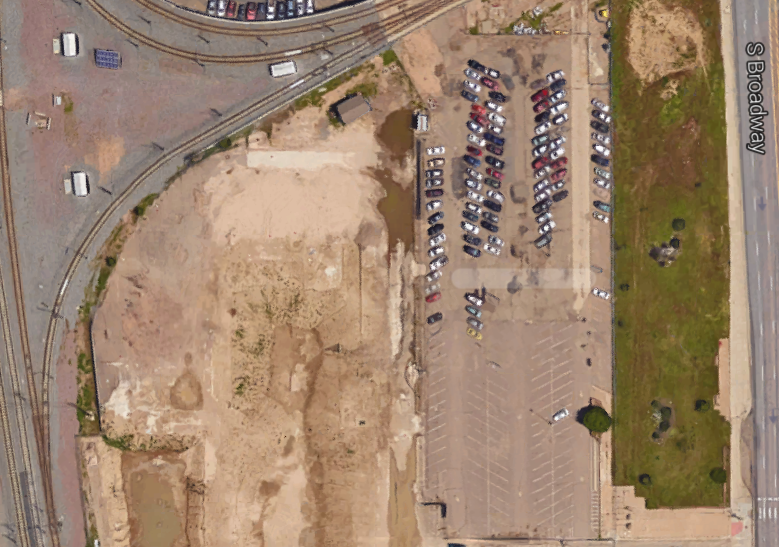Walkable Streets Beat Out Parking in Vision for Future of Broadway Station

On Wednesday the Denver Planning Board approved a plan to transform the area around Broadway and I-25 Station so people can get to the station safely and conveniently without driving.
Under the plan, a new mixed-use neighborhood would rise around the station. Instead of a park-and-ride surrounded by car-first streets, Broadway and I-25 Station would be accessible via new pedestrian and bicycle connections. Community Planning and Development created this framework because it “promotes the use of public transportation, increases transit ridership, and minimizes dependence on the automobile.”
The concept doesn’t sit well with some commuters. A lot of people drive to Denver’s rail stations, park a few miles from downtown, and take the train in — and they’ve been griping that the new plan doesn’t guarantee the preservation of 1,308 parking spots.
But the point of transit is not to facilitate thousands of car trips each day — it’s to enable people to get around cities without taking up all the space that cars take up. Surrounding stations with compact development and walkable streets is how cities get real value out of their transit investments.
Virgil Ridgley lives about 20 miles away in Lone Tree and drives to Broadway Station every day. He told the Planning Board that he requires a parking spot in a neighborhood many miles from his home, even though Lone Tree has a rail station and he drives by several more on his way to Denver.
But Broadway already has more parking spaces than people use. The station filled just 83 percent of its spots on a daily basis last year, and all the parking lots on the southeast corridor operated at 60 to 70 percent capacity, according to RTD.
“There’s a lot more concern and discussion about how we address the parking challenges of this transit-oriented site than there is about addressing the people challenges — getting people in and out of the site,” said Planning Board member Chris Smith.
Smith and rest of the board voted 10-0 (with one recusal) to send the plan to City Council.
It’s too early to say how many parking spaces will be appropriate after the station becomes more accessible via other modes, said RTD Director Jeff Walker, which is why the plan doesn’t pin down a number. “If the need for those spaces diminishes, and it doesn’t seem like there’s a use for them, then what’s the point of keeping them?” Walker said.
In other words, the most potent strategy to avoid a parking shortage is to reduce the need for parking in the first place. If city planners, developers, and RTD do things well, so many people will be able to walk or bike to transit that the loss of a parking lot won’t be an issue.


